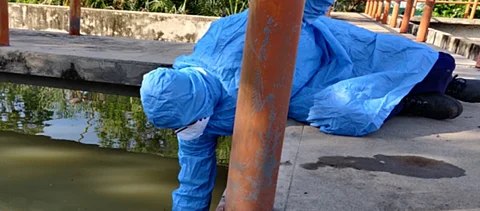

Various studies have demonstrated that faeces can harbour the novel coronavirus SARS-CoV-2. In a bid to estimate the number of potentially infected individuals in Hyderabad, Centre for Cellular and Molecular Biology (CCMB) harvested sewage samples — it was found that about six per cent of its population may have contracted the virus.
The study was carried out by CCMB in collabpration with Center of Scientific and Industrial Research (CSIR) institutions and Indian Institute of Chemical Technology (IICT).
SARS-CoV-2 in sewage samples is found to be non-infectious, and therefore, can be easily taken for epidemiological studies. Estimating the spread is crucial in identifying the affected areas.
Since an infected person sheds viral material in faecal samples for up to 35 days, these studies can provide an overall estimate of the situation in about a month.
To carry out the studies sewage samples from major sewage treatment plants (STPs) were processed for detecting the presence of SARS-CoV-2 viral RNA (Ribonucleic acid).
While viral RNA is detectable in the inlet samples, the outlet (after treatment) samples of STP were largely clean, indicating efficient treatment practices at STP.
Of the 1,800 million litres water used daily in Hyderabad, 40 per cent is processed at different STPs. This study covers about 80 per cent of STPs in Hyderabad revealed that around two lakh people were shedding viral materials.
Since only 40 per cent of the city sewage reaches STPs, the data can be used to extrapolate the overall number of potentially infected people, which turned out to be approximately six lakh, that is, around 6 per cent of the city’s population. The number includes symptomatic, asymptomatic and recently recovered individuals in a window of about 35 days.
A conservative estimate of the number of active cases shedding the virus may be around two lakh.
“Our finding clearly indicates that a large proportion of the affected individuals are asymptomatic and did not need hospitalisation. This is also in agreement with the observation that hospitalisation rush or mortality is way lower than otherwise expected with such a large infection rates at a given time. It explains why our healthcare system has been able to handle reasonably well the situation during the pandemic,” said Rakesh Mishra, director, CCMB.
He added that if studies are carried out in coordination with civic bodies to identify the hotspots and monitor the dynamics of the infection rate, taking necessary measures would become easier.
The findings are posted on preprint server, MedRxiv, which is yet to be peer reviewed.
All the experiments were conducted at the CSIR-CCMB COVID-19 testing facility and the teams included Hemalatha Manupati, Kopperi Harishankar and S Venkata Mohan from CSIR-IICT; and Uday Kiran, CG Gokulan, Santosh Kumar Kuncha and Rakesh K Mishra from CSIR-CCMB. India Science Wire